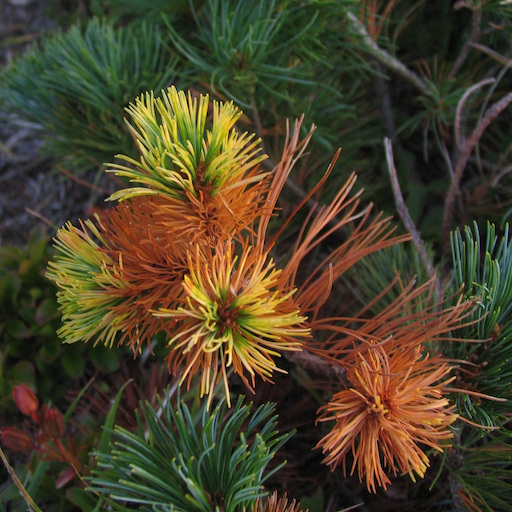Bykasov V. E., Chujan G. N. Geomorphology of the Bering Island Coastal Area // 5th International Conference on the Environmental Management of Enclosed Coastal Seas (EMECS–2001), Japan, Kobe, 2001.
GEOMORPHOLOGY OF THE BERING ISLAND COASTAL AREA
Valery Bykasov and Galina Chujan
The Bering Island is an elongated from south-east to north-west and tectonically upstanding block of a shelf platform that, in its turn, forms the top of a subaqueous ridge of a western part of the Aleutian island volcanic arc. The greater part of the island is occupied with a middle-high ridge (from 150 up to 750 m) that stretches from CapeMonati in the south-east to the depression of LakeSarannoe. This ridge is distinctly subdivided into two morphological parts by the watergap of the Polovinnaya and Peresheek rivers. The ridge relief is mainly denudational-tectonic. This is emphasized by a high (up to 100-250 m) shore cliff steeply breaking at the coast.
The history of development of the islands is rather peculiar. There was repeatedly observed sometimes decrease of their area, sometimes, on the contrary, its increase in several times. Anyhow, even in the second phase of Recent Pleistocene glaciation the Bering and MednyIslands represented the united land the coast line of which lay approximately along 100-200-meter isobaths. The island’s recent outlines were formed about 4-5 thousand years ago after Middle Holocene climatic optimum. At present the island is slowly uplifting.
The island’s geological structure conditions considerable differences in formation of shore and near-shore forms of relief of its southern (the Pacific) and northern (the Bering Sea) coasts, there being a well-expressed bench all over the shore. These relief forms differ in geomorphological structure as well as, correspondingly, in lithodynamic peculiarities of sedimentation. As a rule, the island southern part shores are high and precipitous witha lot of almost impassable areas and non-passages. Here the cliffs are very active and they are the source of supply of fragmental product into the coastal area. The shore line of the island northern part is rimmed with a wide strand up to 100-200 m.
Generally, the following total regularities of geomorphological structure and matter distribution in the beach area are noted for the shore of the whole island. All the recent area of beaches is formed mainly owing to washout of shore cliffs and alluvial drifts of rivers and creeks. As far as the island is slowly uplifting, the bench area is well developed all over its shore. In this area the speed of waves becomes slower and the material brought from the depth remains here not reaching the beach area. For the same reason there are no well-expressed stormy breakers. Thus, any considerable dynamic differentiation of sediments of the shore area is not observed. By the way, this is confirmed by the data received by us from the analysis of mineralogical composition of sandy fraction and petrographic composition of pebbly material. The obtained data confirmed these general regularities of formation and development of the BeringIsland shore area.
ГЕОМОРФОЛОГИЯ ПРИБРЕЖНОЙ ЗОНЫ ОСТРОВА БЕРИНГА
Остров Беринга представляет собой вытянутый с юго-востока на северо-запад и тектонически приподнятый блок шельфовой плиты, которая, в свою очередь образует вершину подводного хребта западной части Алеутской островной вулканической дуги. Большую часть острова занимает средневысотный, от 150 до 750 м, хребет, который, протягиваясь от мыса Монати на юго-востоке, до депрессии озера Саранного, четко подразделяется сквозной долиной рек Половинной и Перешеек на две морфологические части. Рельеф хребта, по большей части, денудационно-тектонический, что подчеркивается высоким, до 100–250 м, береговым уступом, круто обрывающимся к морскому побережью.
История развития островов довольно своеобразна. Неоднократно наблюдалось то уменьшение их площади, то, наоборот, её увеличение в несколько раз. Во всяком случае, еще во второй фазе верхнеплейстоценового оледенения острова Беринга и Медный представляли собой единую сушу, береговая линия которой проходила приблизительно по 100-200-метровым изобатам. Современные очертания остров принял около 4-5 тысяч лет назад после среднеголоценового климатического оптимума. В настоящее время остров испытывает медленное поднятие.
Геологическое строение острова обуславливает, при наличии хорошо выраженного по всему побережью бенча, существенные различия в образовании береговых и прибрежных форм рельефа его южного (тихоокеанского) и северного (беринговоморского) побережий как по геоморфологическому строению, так, соответственно, и по литодинамическим особенностям осадконакопления. Берега южной части острова как правило высокие, обрывистые, с большим количеством труднопроходимых участков и непропусков. Клифы здесь очень активные и служат источниками поступления обломочного материала в береговую зону. Береговая линия северной части острова окаймляется широкой, до 100–200 м, полосой пляжа.
В целом, для побережья всего острова отмечаются следующие общие закономерности геоморфологического строения и распределения вещества в зоне пляжа. Вся современная зона пляжей сформирована преимущественно за счет размыва береговых уступов и аллювиального выноса рек и ручейков. Поскольку остров испытывает медленное поднятие, то по всему его побережью хорошо развита зона бенча. В этой зоне происходит гашение скорости волн и материал, влекомый с глубины, остается здесь не доходя до зоны пляжа. По этой же причине нет четкой выраженности штормовых валов. То есть, сколько-нибудь существенной динамической дифференциации осадков пляжной зоны не наблюдается. Что, кстати, подтверждается и данными проведённого нами анализа минералогического состава песчаной фракции и петрографического состава галечного материала, которые подтвердили эти общие закономерности в формировании и развитии береговой зоны острова Беринга.

